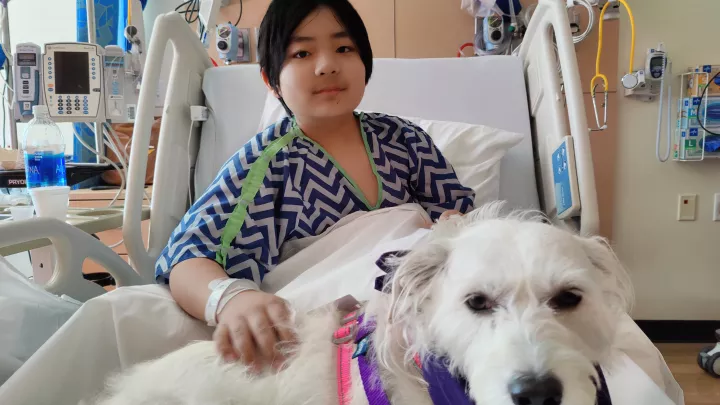
Appendicitis: Signs, Symptoms and Diagnosis
The Tale of the Inflamed Appendix

Jack's mom walked in the front door after work to find him lying on the living room couch. "How was your first day of fifth grade, honey?" she asked. "Not so good," he groaned. "I felt a little sick this morning, but thought I was just nervous about school. After lunch today, it got worse." This response immediately concerned Mom. "What do you mean?" she asked. "Tell me what’s happening. What got worse?" "Well, my stomach started hurting here," Jack said. He pointed near his belly button. "Now, it moved down here." He pointed toward his right hip. "I also feel like I might throw up."
Jack felt hot and his skin was flushed; Mom made the split decision to take her son to the emergency room of the local children's hospital. The doctor there examined Jack, who pulled away when his abdomen was examined. "Don't touch!" Jack exclaimed as he winced. The doctor ordered some blood and X-ray tests. When the test results came back, the doctor told Jack he probably had appendicitis. "Jack, you're going to have to spend the night in the hospital with us."
Signs and Symptoms to Recognize Appendicitis
In Jack's story, Mom did a great job of picking up on the physical and verbal cues that her son might be suffering from something more serious than an average stomach ache. Appendicitis can occur at any age, and according to statistics, it's slightly more common in males than females. The condition very easy to mistake for a stomachache, so it's important to bring your child to the emergency room if they're exhibiting the symptoms listed below:
- Abdominal pain that comes on suddenly and occurs before other symptoms.
- Pain that most often begins near the belly button and moves to the lower right side of the abdomen.
- Pain that gets progressively worse.
- Loss of appetite, nausea, vomiting or fever.
What is appendicitis?
Let's start with the internal organ in question, the appendix. The appendix is a finger-shaped pouch attached to the large intestine in the right-lower abdomen. The exact function of the appendix is not known. The internal lumen, or tube-like opening inside the appendix, can become blocked with feces, parasites or enlarged lymph tissue. It can even become blocked as a result of trauma to the abdomen. When a blockage occurs in the appendix, you can get appendicitis. To help you better understand what this means, "appendic" refers to the appendix and "itis" means inflammation. Therefore, appendicitis means "inflamed appendix." An inflamed appendix can burst if the inflammation is not treated or the appendix is not removed in a timely manner. In young children, it's not uncommon to see a burst appendix. The source of the abdominal pain or fever is sometimes difficult to determine in younger children. Young patients may not be able to give the specifics of their pain or symptoms, occasionally leading to a late diagnosis or an incorrect early diagnosis. That's why it is so crucial for parents to be aware of their child's symptoms and act quickly if they suspect appendicitis.
This "Howcast" video provides an ultra-brief overview of what to look for to recognize appendicitis. I recommend it because it is short and gives just a brief overview of the topic.
At Our Hospital
With our special urgent care unit, Kids Care and our designation as a Pediatric Critical Care Center, our Division of Emergency Medicine and Transport is uniquely suited to treat children and teens with emergency medical issues.
Follow-Up Post
In my next post, I'll continue our discussion of appendicitis by chatting about treatment options and will explain what it means if your child's appendix bursts. Thanks for reading and stay healthy!


